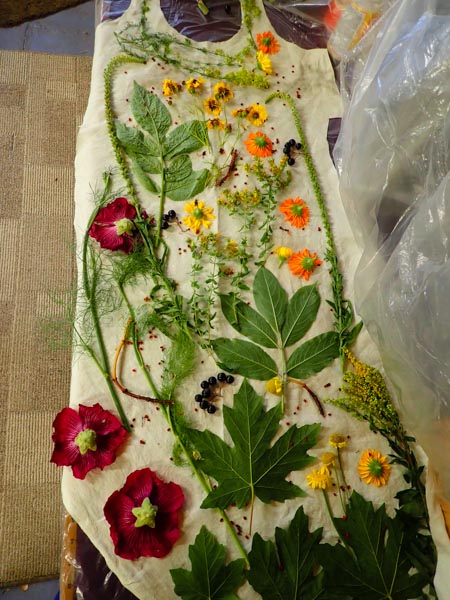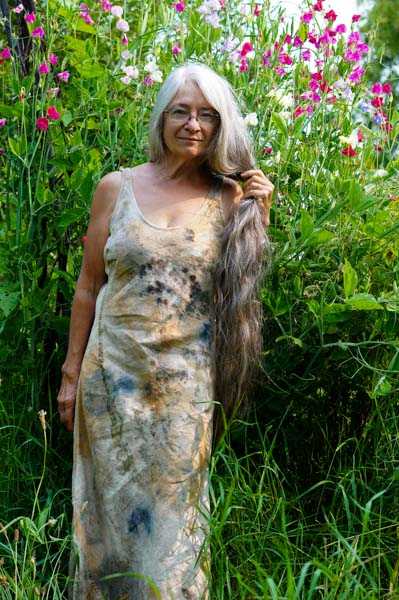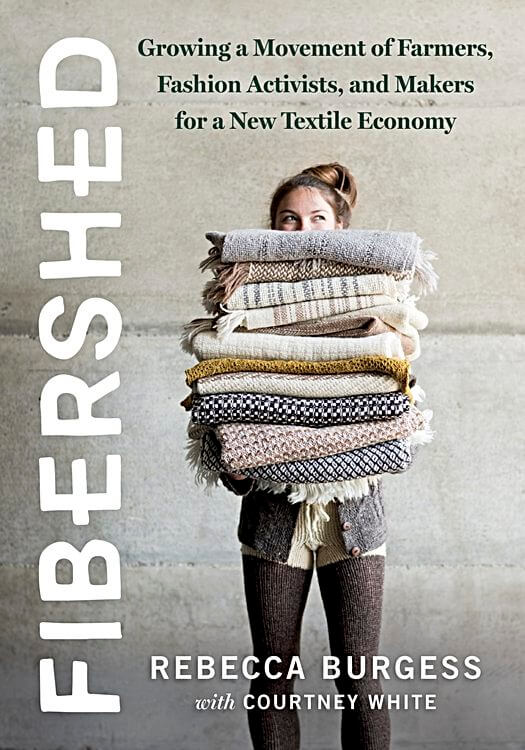Plants of Many Colors!
Below is a list of some of the dye plants grown at Barbolian Fields. I don’t grow a lot of any one thing, but I might have extra to share. Availability varies from year to year. Please contact us if you are interested.
Dye Plants for 2022
- Agrimony (Agrimonia eupatoria)
- Alder (Alnus spp.)
- Basil (Ocimum basilicum)
- Berberis / Red Barberry (Berberis thunbergii)
- Broom, Dyer’s; aka Dyer’s Greenweed, Woadwaxen, Broom (Genista tinctoria)
- Calendula / Pot Marigold (Calendula officinalis)
- Coreopsis (Coreopsis tinctoria and others)
- Cosmos (aka Mexican Star) (Cosmos bipinnatus)
- Crocosmia, aka Montbretia (Crocosmia aurea)
- Curly Dock (Rumex crispus)
- Dahlia (Dahlia coccinea)
- Fennel, wild & bronze (Foeniculum vulgare)
- Golden Marguerite, aka Dyer’s Chamomile (Anthemis tinctoria)
- Goldenrod (Solidago spp.)
- Grapes (Vitis spp.)
- Gum Plant (Grindelia robusta)
- Gypsywort (Lycopus europaeus)
- Hollyhock (dark varieties) (Alcea rosea)
- Hops (Humulus lupulus)
- Indigo (Indigofera tinctoria, aka Indigoferum tinctorium)
- Indigo, Blue False (Baptisia australis)
- Indigo, Japanese (Persicaria tinctoria, aka Polygonum tinctorium)
- Kinnikinnick, bearberry (Arctostaphylos uva-ursi)
- Lady’s Bedstraw (Galium verum)
- Loquat (Eriobotrya japonica)
- Madder (Rubia tinctorum)
- Marigolds (Tagetes spp.)
- Meadowsweet (Filipendula ulmaria; Spirea ulmaria)
- Mugwort (Artemisia vulgaris)
- Mullein (Verbascum thapsus – L.)
- Navajo Tea (Cota, Hopi Tea, Greenthread, Field Coreopsis) (Thelesperma filifolium)
- Nettles (Urtica dioica)
- Oregon Grape (Mahonia aquifolium)
- Osage Orange (Maclura pomifera)
- Rhubarb (Rheum spp.)
- Rudbeckia / Black-eyed Susan (Rudbeckia fulgida)
- Safflower Zanzibar (Carthamus tinctorius)
- Saint John’s Wort (Hypericum perforatum)
- Scabiosa, Purple Pincushion (“Black Knight”) (Scabiosa Purpurea)
- Siberian Pea Shrub (Caragana arborescens)
- Strawberry Tree (Arbutus unedo)
- Sunflowers, Hopi Black Dye and others (Helianthus annus)
- Sweet Woodruff (Galium odoratum)
- Tarragon, Mexican (Tagetes lucida)
- Tithonia, Mexican Sunflower “Torch” (Tithonia rotundifolia)
- Weld (Reseda luteola)
- Willow (Salix spp.)
- Woad (Isatis tinctoria)
- Yarrow (Achillea millefolium)
Top Dye Plants
Dyeing fabric and fibers with plants is a rather long process (especially if dyeing cellulose fibers, like linen). With all the work involved, I prefer to focus on those plants that reliably give strong, long-lasting colors. Different tannin sources, mordants, and pH shifters are all topics too large for this page – but I will share some of my experiments in the pages to come.
My three top plants for longevity and for achieving primary colors are madder, weld, and woad – red, yellow, blue. Walnut husks are easy for browns to blacks.
I have also had good results with coreopsis, dahlias, golden Marguerite, goldenrod, hollyhocks, marigolds, acorns & willows (primarily for tannins), osage orange, and safflowers (although they are a bit fiddly to work with) – and I would recommend these to beginners.
Experimenting Is Half the Fun
So many plants; so little time! However, just because a plant produces a dye doesn’t mean it’s ideal for your purpose. But how will you know unless you try?
For example, I used to grow a fair amount of the Hopi Red Dye Amaranth – which sounds like a no-brainer – but I did not find it to be a dye that lasted very long – good with food, but not so great with fabric. Sunflowers have also given me mixed results. I am not ready to give up on these plants!
Hey, if it doesn’t work, you can always over-dye it. Same with if it fades. You might come up with even more interesting blended color combinations!
Although dye plants have been my passion for many years, I still consider myself a beginner, and perhaps always will be. Many of these plants I grow I haven’t even tried yet (I need another lifetime for all this experimentation!)
I only dye with what I can grow or sustainably wildcraft (I’m not using insects, for example). Also, I do not use harsh chemicals for mordants.
Recently, I have been experimenting with foraged mushrooms and lichens and trying eco-dyeing techniques on linen and silk, which is rather exciting. More on all of this in pages to come!
Thanks for checking back in!
~ * ~
-blythe
References & Resources
I own or have read most of the books listed below and can highly recommend them. I was surprised to find how many of them were available through our public library!















And here is one from my favorite publishing company, Chelsea Green: “Fibershed” by Rebecca Burgess — looks like a great book and right in line with my way of thinking. I am hoping to pick up a copy in the near future.
(Affiliate links – thanks for your support!)


